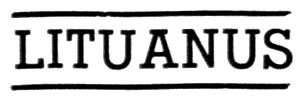
June, 1958 Vol. 4, No. 2
Managing Editor P. V. Vygantas
 |
www.lituanus.org |
| Copyright
© 1958 Lithuanian
Students Association, Inc. June, 1958 Vol. 4, No. 2 Managing Editor P. V. Vygantas |
|
THE ART OF TELESFORAS VALIUS
PAULIUS JURKUSr
?PAULIUS
JURKUS, is a writer of short stories, novels, poetry, as well as art
and literary criticism. He is a graduate of the University of Vilnius;
currently is an editor of the newspaper "Darbininkas."
The graphic artist Telesforas Valius came upon the Lithuanian art scene at a time when the movement to revive folk art traditions and join them to the achievements of modern art was extremely active-Interest in native folk art sprang up early in the 18th century, but not until independent Lithuania's Kaunas Art School had graduated a generation of young artists did it become a fruitful movement. This generation, having become acquainted with modern European art. was even more deeply enchanted by the primitive character of folk art, by its symbolism and its profound significance; these young artists drew their inspiration from Lithuanian folk art, and upon its traditions they established a purely national form.
The influence of this movement on graphic artists was espacially pronounced. Some of them imitated the folk style directly, while others merely borrowed its primitive style and its decorative elements. The artists were brought into a deeper acquaintance not only with the folk art itself but with their own nation as well; they introduced folklore elements into their work, and the landscapes they created favored a primitive and antique character. Later almost all the artists abandoned these traditions and established their own personal styles.
Telesforas Valius was also greatly influenced by Lithuanian folk art in the early days of his career. His graphic arts teacher was Adomas Galdikas, who himself placed a high value on folk art and inculcated in his students an appreciation of the mystical beauty of the land. Valius approached folk art both through Adomas Galdikas and directly, but he immediately separated himself from the other artists of the day. Valius was attracted neither by the primitiveness nor by the decorative qualities nor by the symbolism of folk art; rather, he was absorbed by the world view in which Lithuanian folk art was formed. He noted its creative seriousness, its meditative quality, its unique mysticism. These found a response in the artist's nature, and upon these elements he established his own work.
The artist's view of the world is a sad and tragic one. He sees man in perpetual conflict, and feels a profound drama at the very center of man's being. Man's relations with the world and grief at his fate are the principal themes of Valius' work. Many Lithuanian graphic artists and painters portray nature and try to penetrate into her secrets, and are not averse to decorative ornamentation. All this is foreign to Valius. Nature is introduced only sparingly, as a background for man's internal conflicts, and once introduced is subordinated to this tragic pattern. Valius* work deals solely with ideas; it is not a creative game, not form for the sake of form.
One of Valius' first works was "Velykų rytas" (An Easter Morning), done some 30 years ago. In it are already introduced all the imperatives of his later work — a distinct subject, an emphasis on ideas, a maximum restraint of form. The viewer is taken to ancient Samogitia and shown a small town orr a joyous Easter morning. The artist has made use of the church tower and the belfry to express this joy; he has engaged trees and fences and the very sun in the rhythm of the procession. Flags flutter as if to extend the joy of this morning into the fields. The factural originality, the elegance of the picture's lines do not exist for their own sake but are blended into a single artistic truth.
But a certain amount of fragility, a hint of tragedy, is evident in this youthful work. It is introduced in the outlines of the church, in the silhouettes of the beggars and the kneeling worshipers.
Later this tragic feeling overwhelms the artist's work completely. We see this in "Tragedija Baltijos pajūryje" (Tragedy on the Shores of Baltic), a cycle of four compositions, and in "Badas" (Famine) and "Atsisveikinant" (The Farewell). At the same time he returns to the folk past, and in his woodcuts he portrays in epic fashion the times of Dionizas Poška and the Devil of the folk tales.
The cycle "Tragedija Baltijos pajūryje," which Valius created in 1942, is among his finest works. It is a complete ballad, portraying man's poverty and a fisherman's fate. The first composition depicts the wives waiting for their fishermen. They are heavy, stiff, filled with despair. The smoke of a bonfire makes one think of a sacrifice to that dark and death-dealing sea.
The second picture, "Iš Vilnių" (From the Waves), shows a drowned fisherman being dragged from the water. One sees the wives' lamentations, the unquiet sea and a profound heaviness.
The third work, "Paskutinis palydėjimas (The Final Accompanying), is highly condensed and balanced. In the middle distance a coffin is being carried; in the foreground, an open grave and two upright spades. Some sailboats in the background provide contrast.
The fourth of the series, "Karstas" (The Casket), is the finale of this tragic ballad, the final step of a man's journey. Here, against the background of a playful sky, a gigantic casket is raised — man's fate, Imago mortis. Footprints in the sand speak as if they were traces of previous generations.
In this somber and mystical fashion, Valius portrays a single tragedy on the Lithuanian seacoast. The work has something of a national character, but at the same time it is universal, for it also depicts man's fate in the abstract.
The woodcut "Badas" suggests a symbolic meaning with several characteristic strokes. Here even the branches are painfully twisted, like people filled with despair. The trembling lines, the details of an arid and dead earth, the shadows are all infused with a mood of alarm and drama.
Valius' tragic view was further heightened by war and exile. At this time he created "Motina" (The Mother), "Gaisras Lietuvoje" (Lithuania in Flames) and "šv. Sebastijonas" (St. Sebastian). The first portrays a mother whose children have been taken from her by war. The mother stands like a sorrowing shadow next to a skull, next to her doom.
"Gaisras Lietuvoje" symbolizes the tragedy of the Lithuanian nation. It depicts a fire in a small village a woman has climbed to the belfry and is calling foi .icip. This heavy and frightening woman makes one think of the Lithuanian nation, and of her cry for help against the gigantic conflagration that has overtaken the artist's homeland.
Valius does not often illustrate books. While he was living in Austria and Germany, he did do illustrations for Rainer Maria Rilke's "Cornet." He approached this book with all his seriousness, attempting to portray its mystic tone.
The artist's work took a new direction when he emigrated to Canada. His interest still centers in man, but his form has gradually changed. His compositions have become larger, and he ha; given up the wood he used to use in favor of linoleum. This has brought other changes; the black areas in his compositions have disappeared, having been replaced by the play of fine lines.
Valius does not set himself limits but always attempts to introduce new elements in his work. In Canada he has introduced color (most Lithuanian graphic artists have used color). He employed it somewhat timidly at first, but only until he accustomed himself to it. He made a trip to Paris in 1956 that had a great influence on him and introduced him to many modernist tendencies. He brought back from Paris a number of prints in which the use of color is especially noteworthy.
Yet in these works he still portrays man in his pensive and tragic moments, in memory he returns to his native land where mystical and legendary figures arise, ephemeral and sad. Th's cphemerality is further heightened by a broad color range. In essence, he remains the same graphic artist; the main lines in his works are accentuated with black, and color expresses the inner rhythm and appears to the viewer in all its factural inventiveness and in a richly suggestive scale.
Telesforas Valius was born in Riga on July 10, 1914; he graduated from the graphic arts studio of the Kaunas Art School in 1937. From that year on he was represented in all the exhibitions held by the Society of Lithuanian Artists. From 1942 to 1944 he headed the graphic arts department of the Vilnius Art Academy, and from 1946 to 1949 he held the sr,me poet at the Institute of Applied Arts in Freiburg im Breisgau, Germany, He was one of the organizers cf the Lithuanian Art Institute and was its chairman for a long time. He organ zed and participated in exhibitions in Austria, Germany, the United States and Canada, and he is a member of several associations of Canadian artists. His works are in museums in Kaunas and Vilnius and in Germany, Austria and Canada.
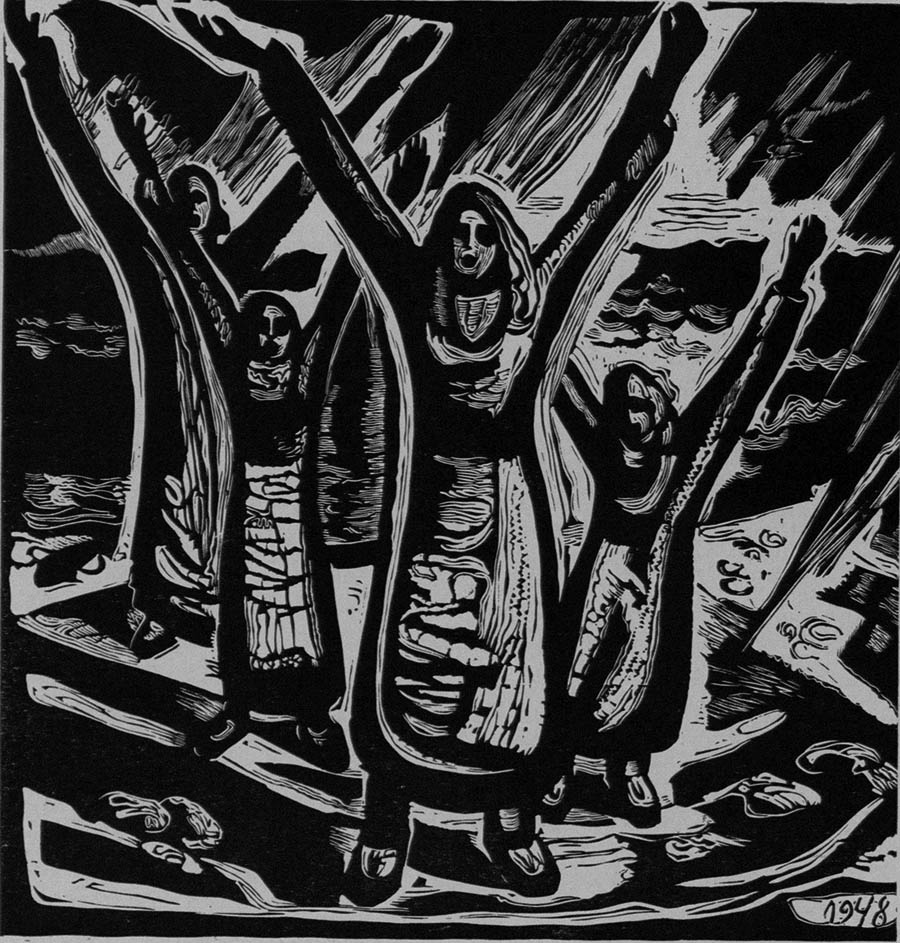
The Cry
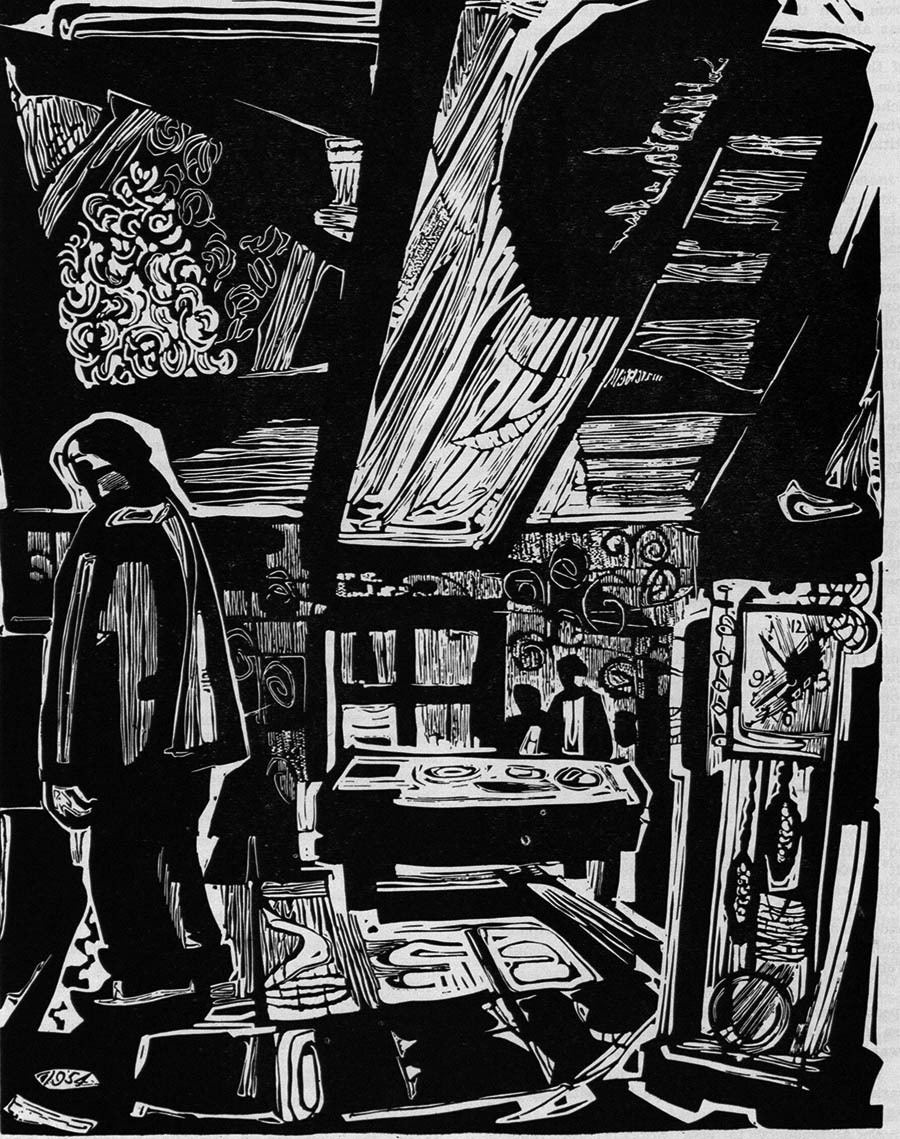
The Clock
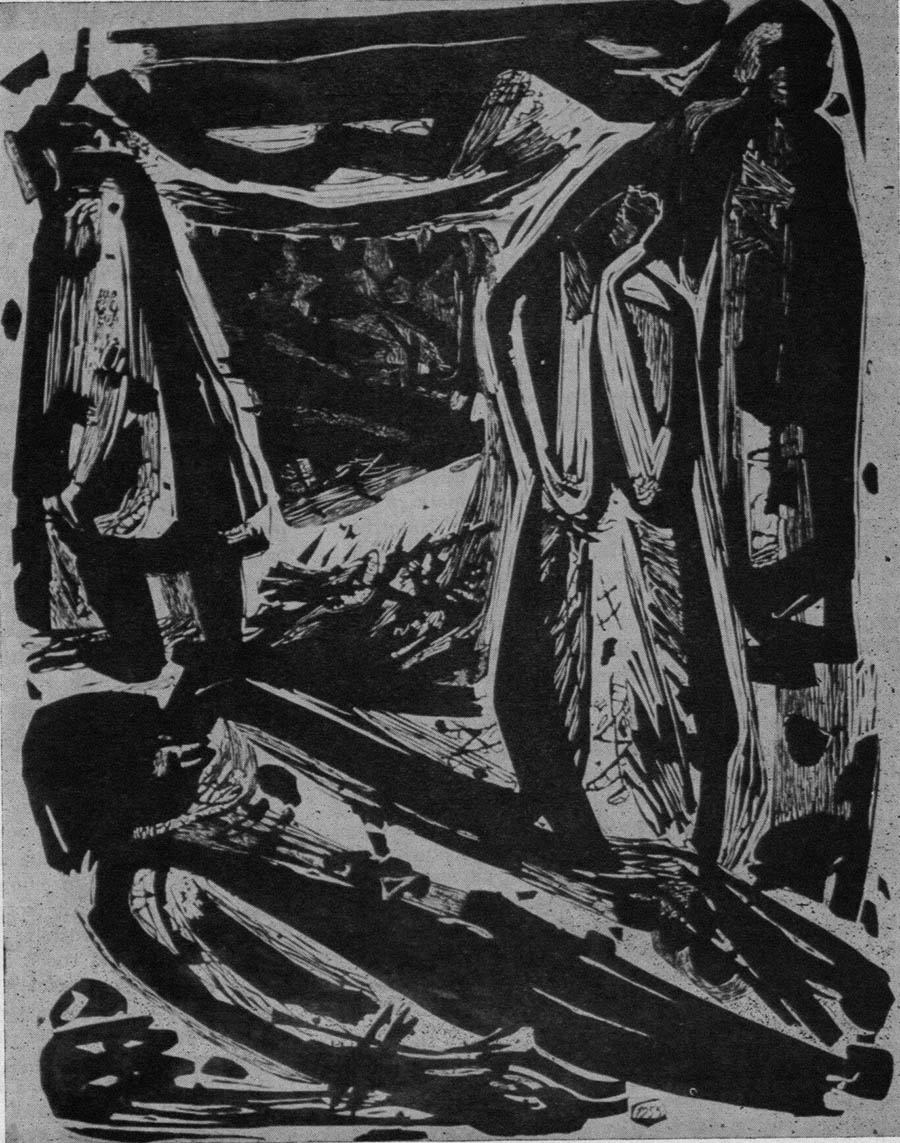
Four Figures
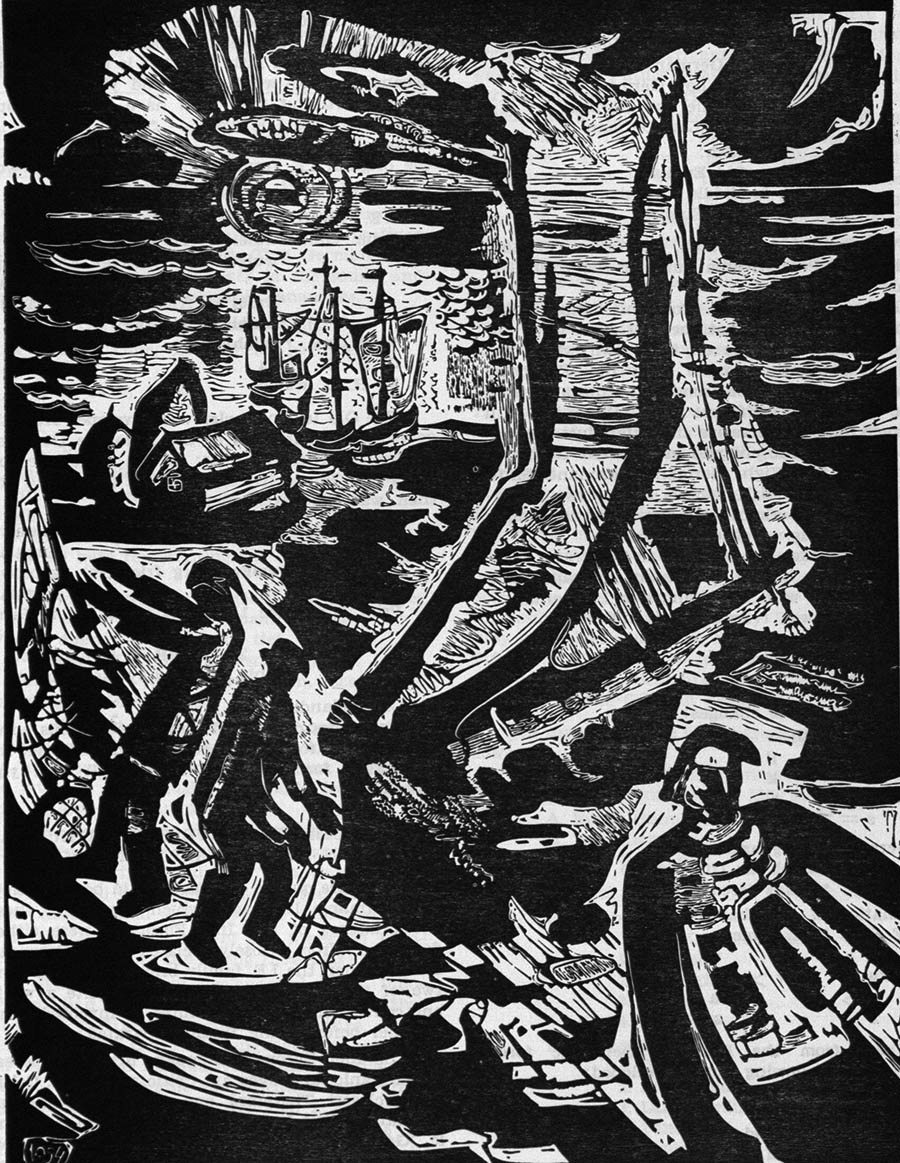
The Fishermen
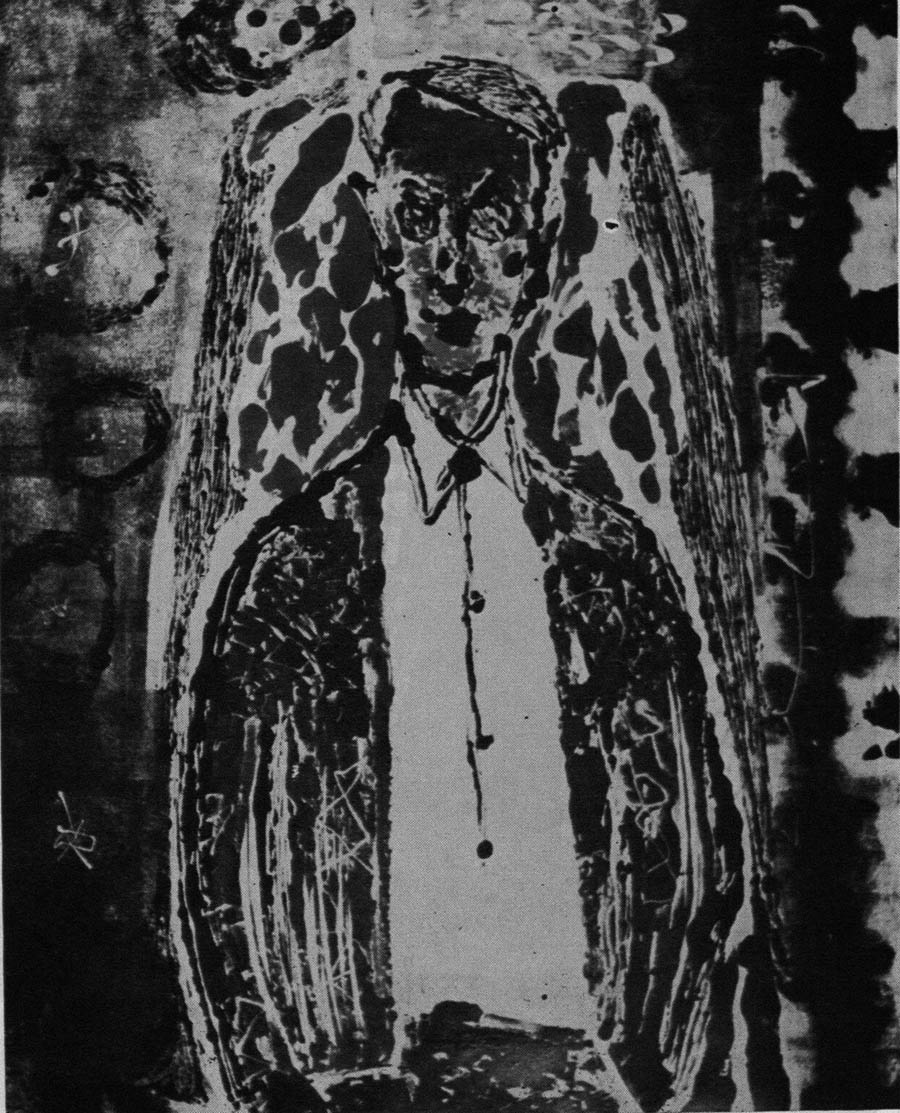
Self fPortrait
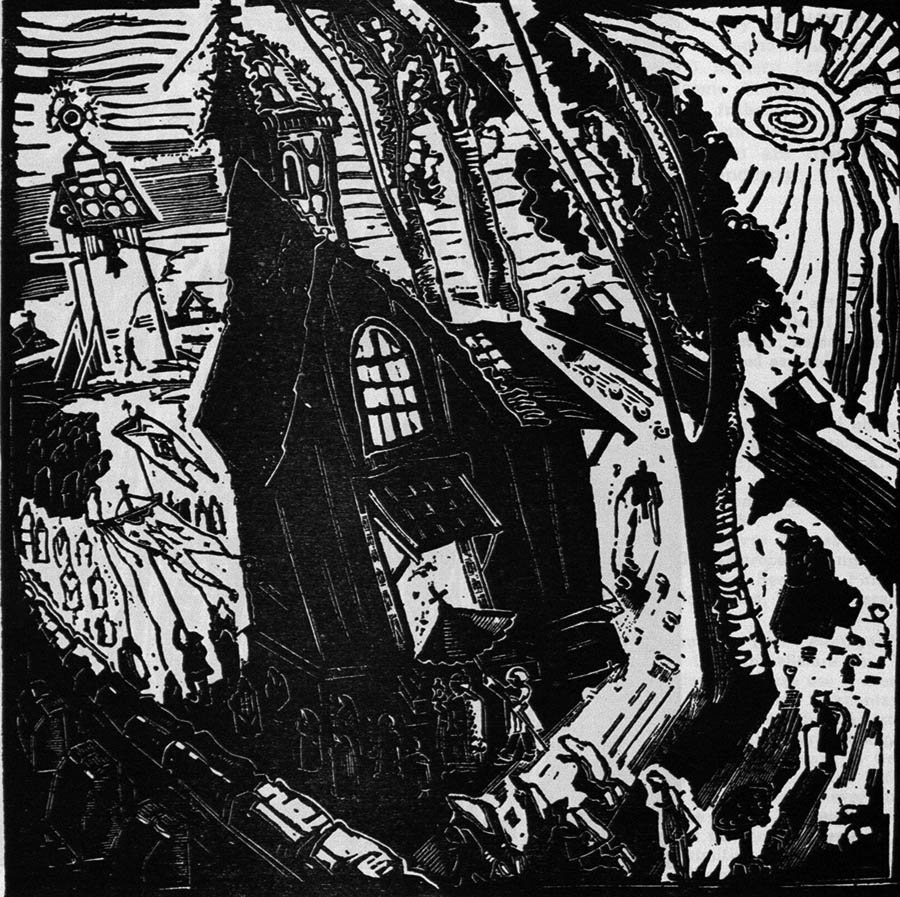
An Easter Morning
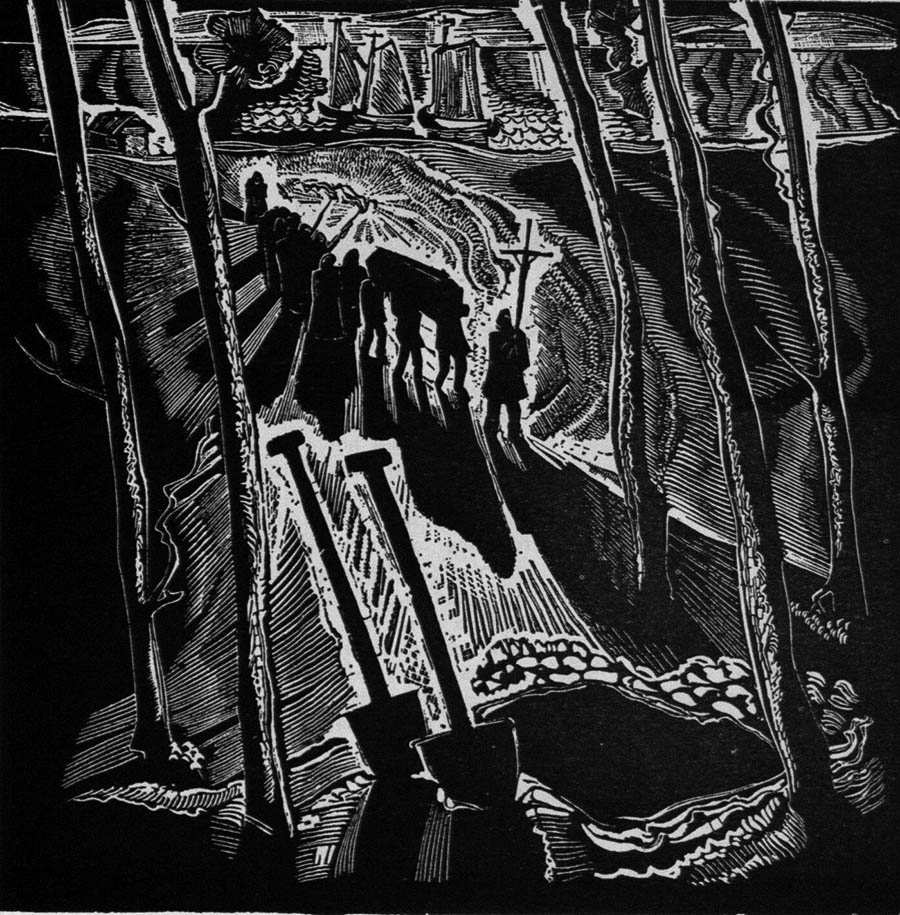
The final Accomponying
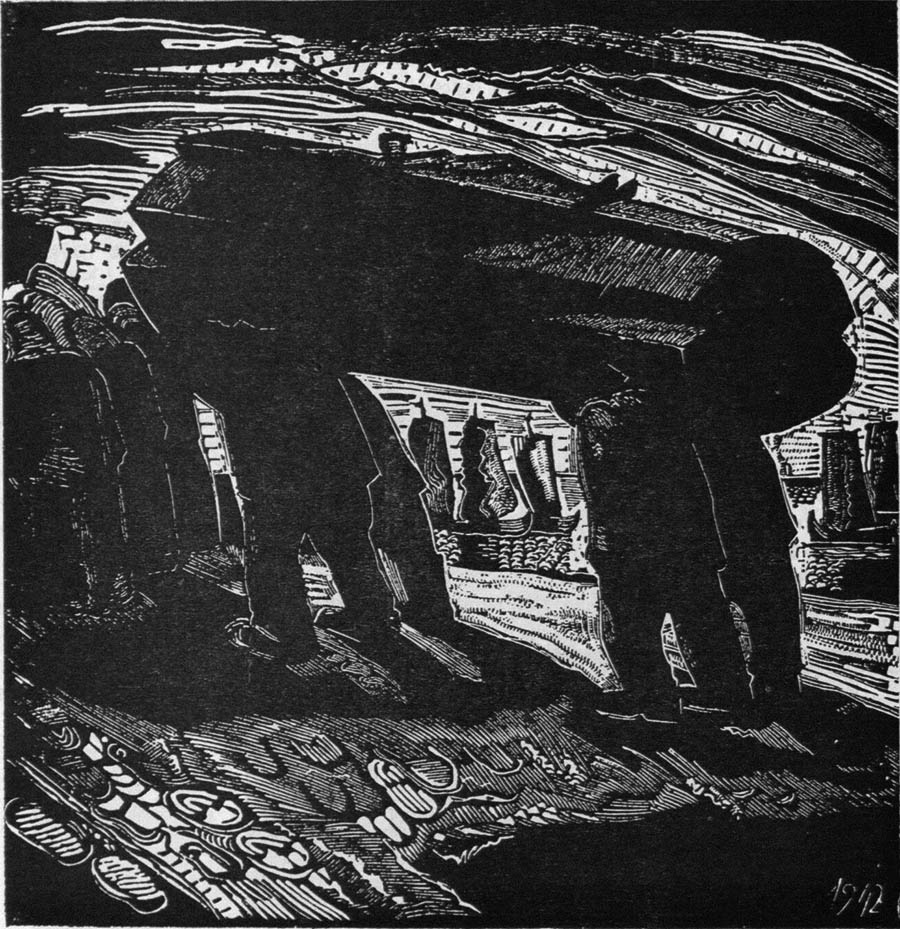
The Casket
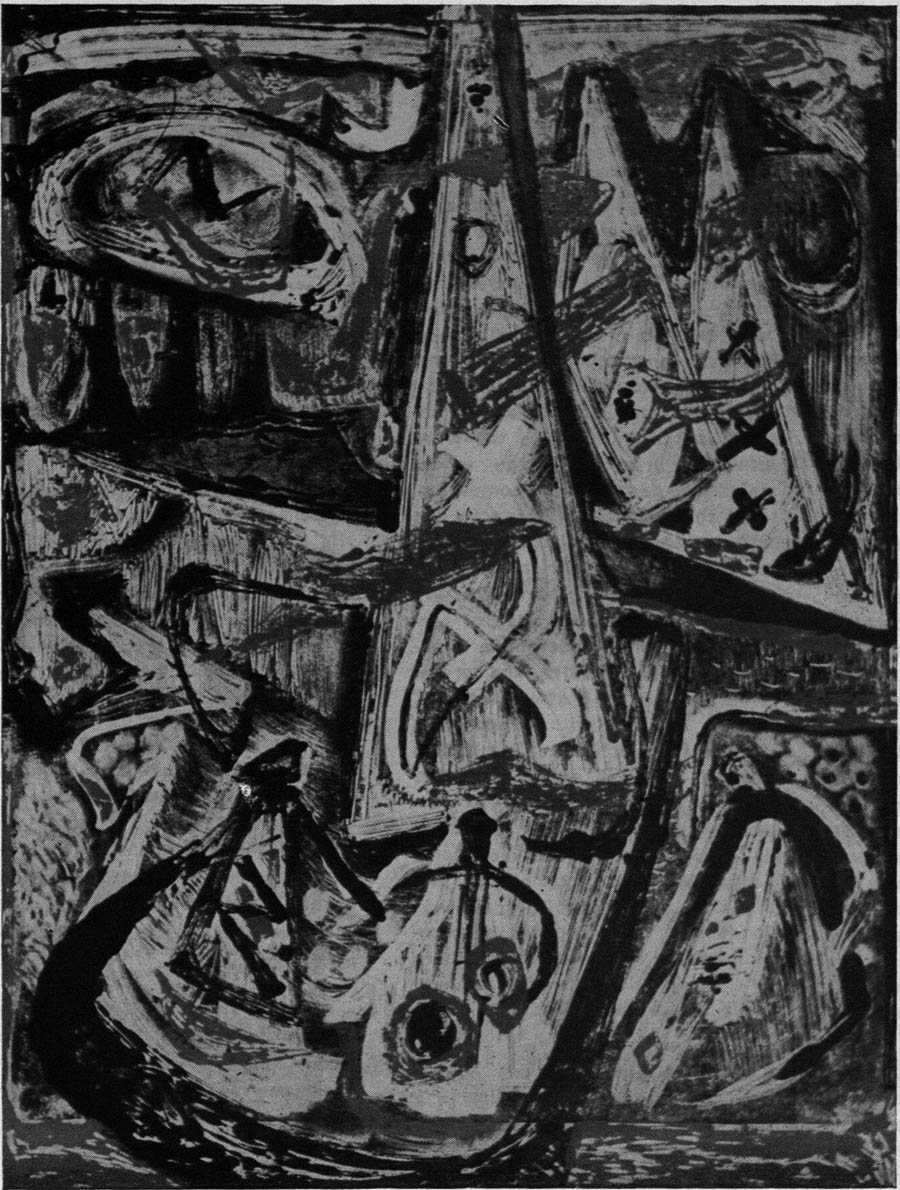
On the Shore
(Colored tipograph)
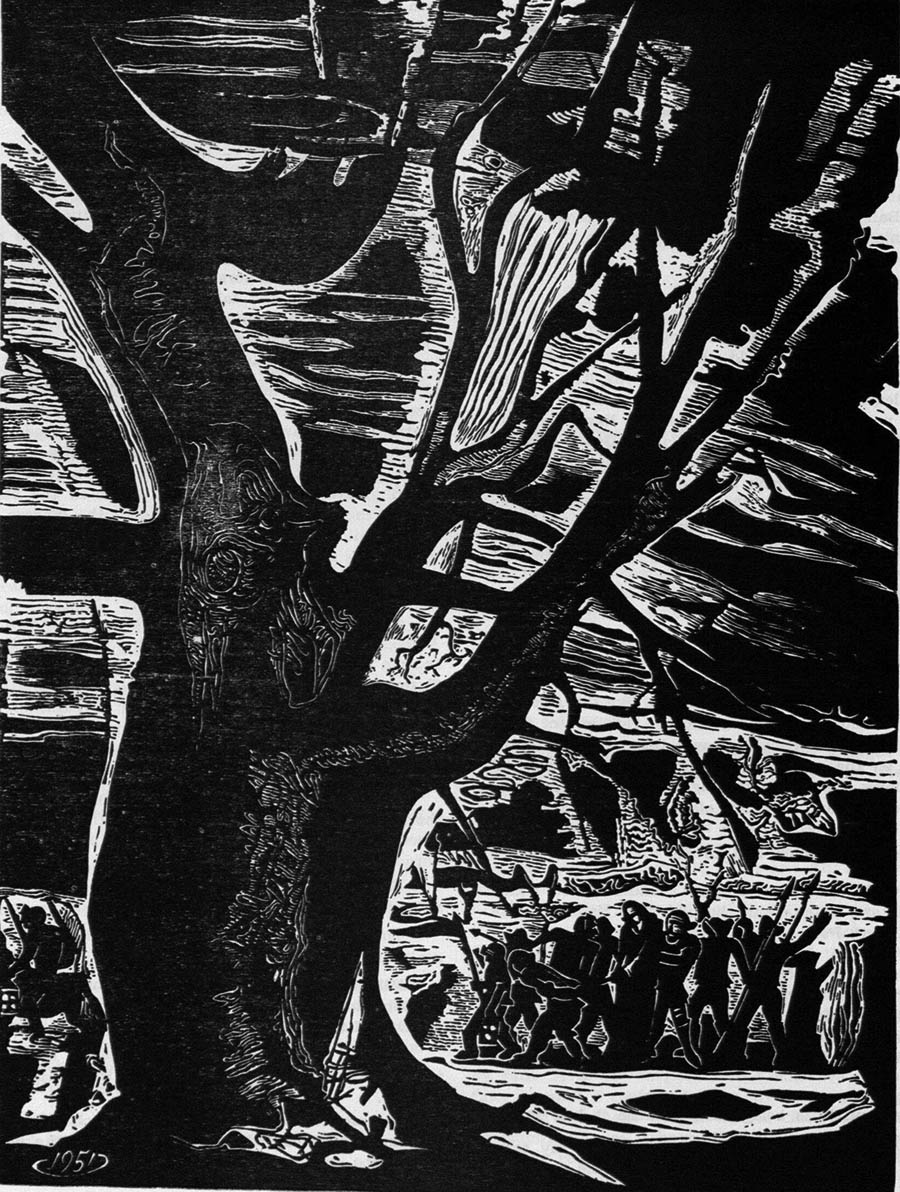
The Tree
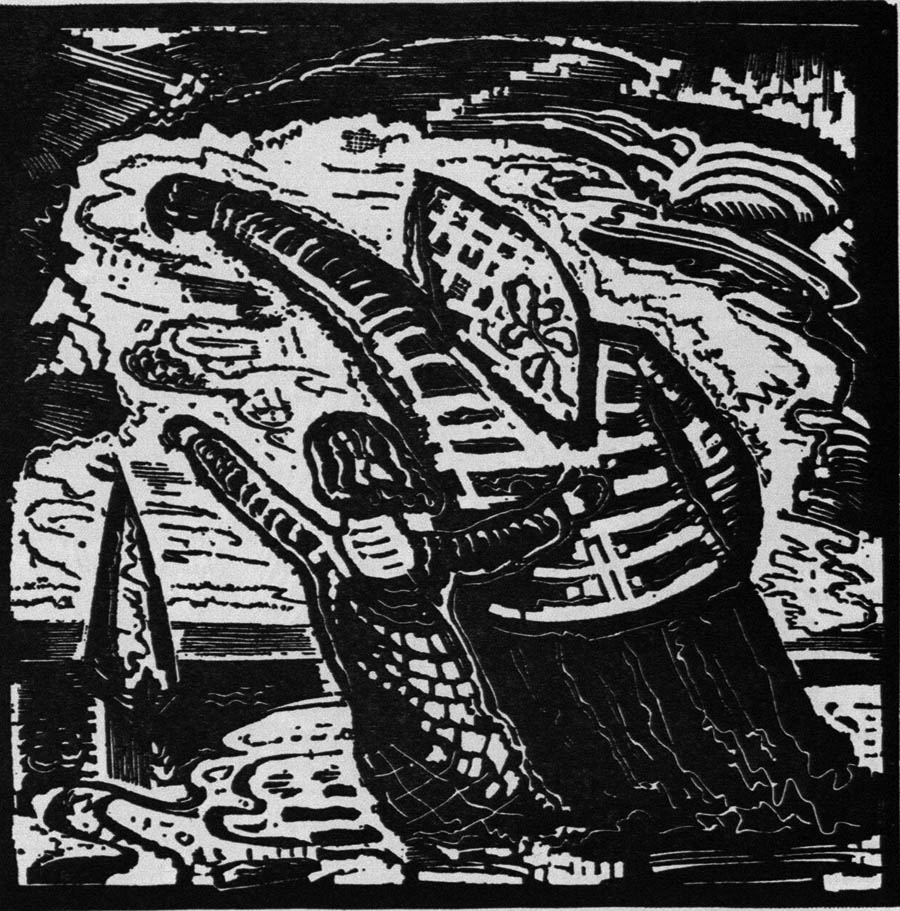
The Farewell
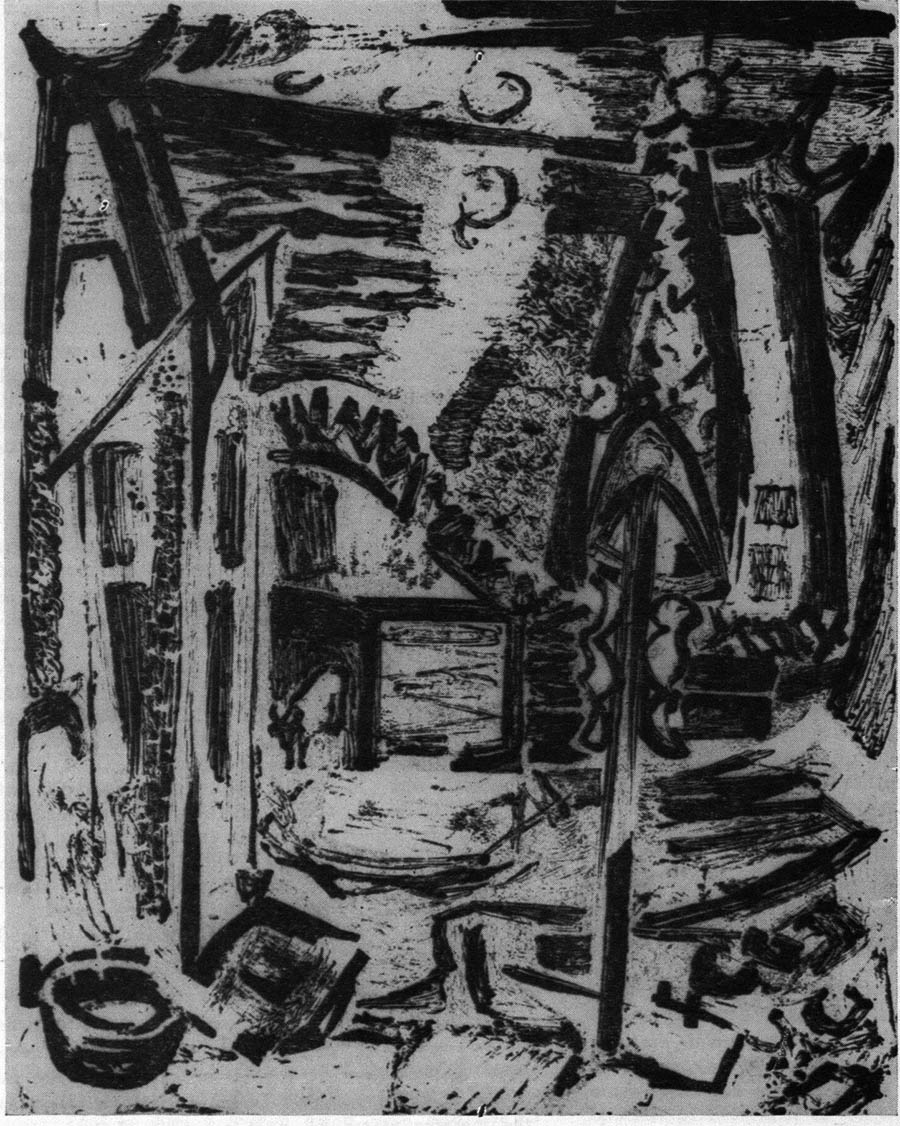
In Samogitia